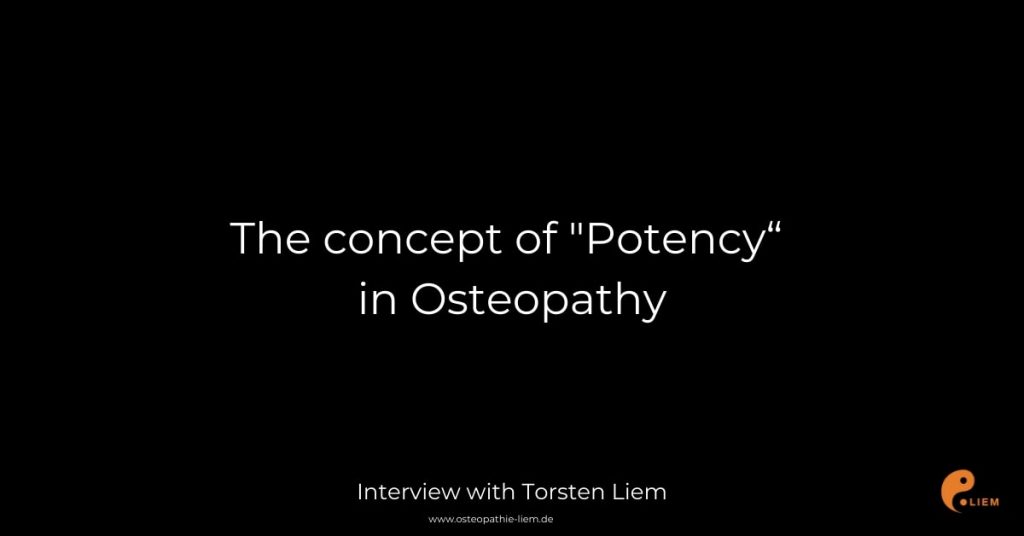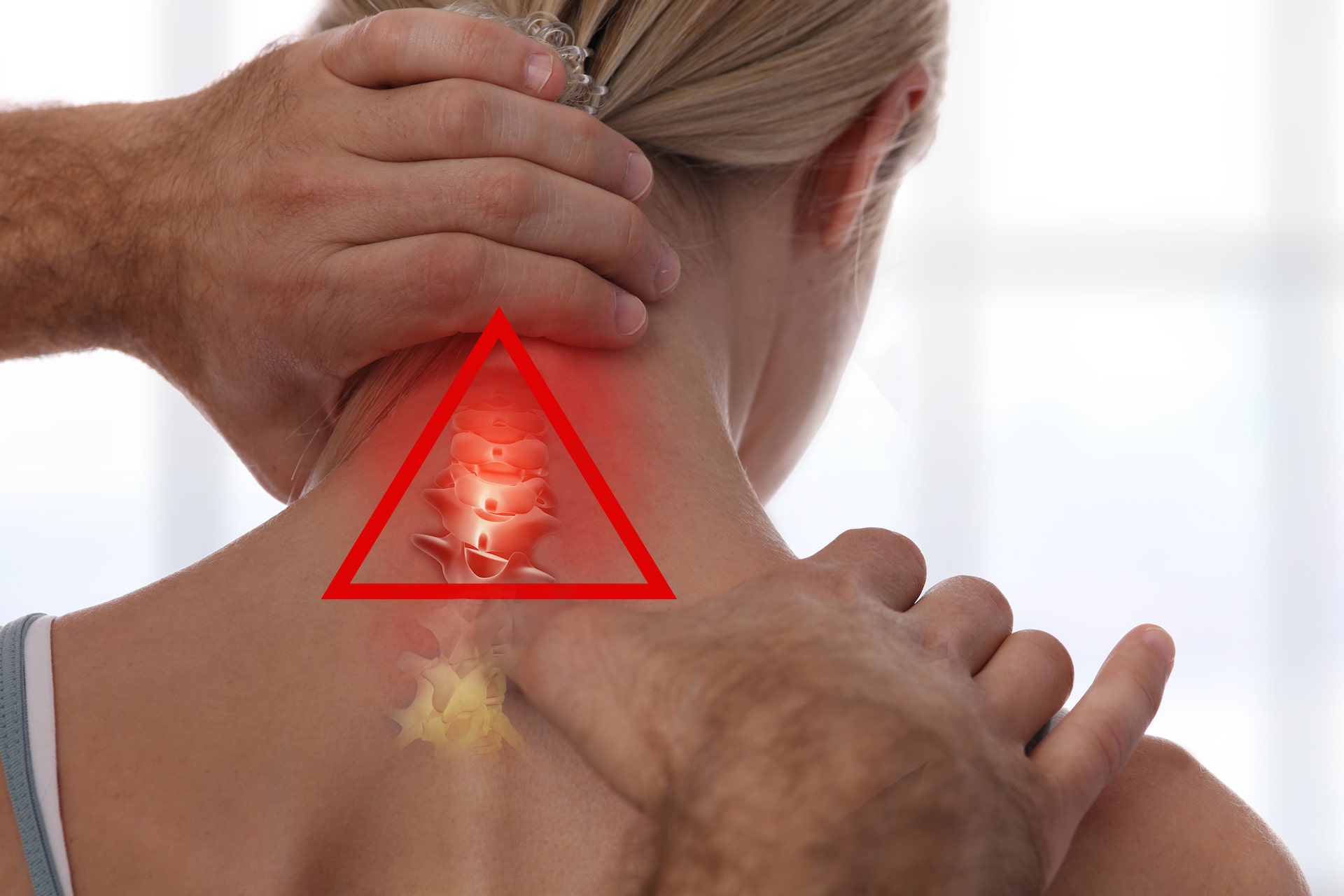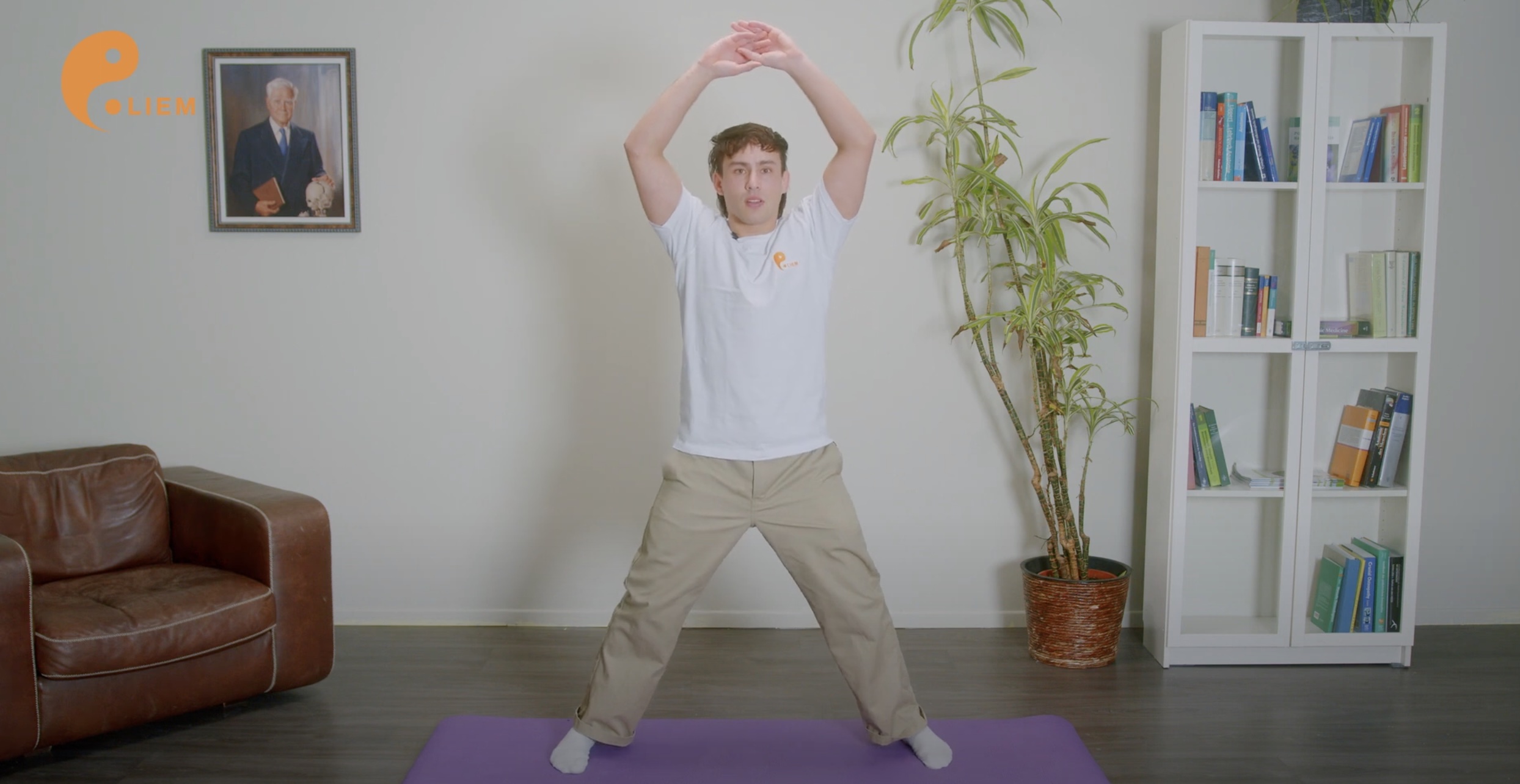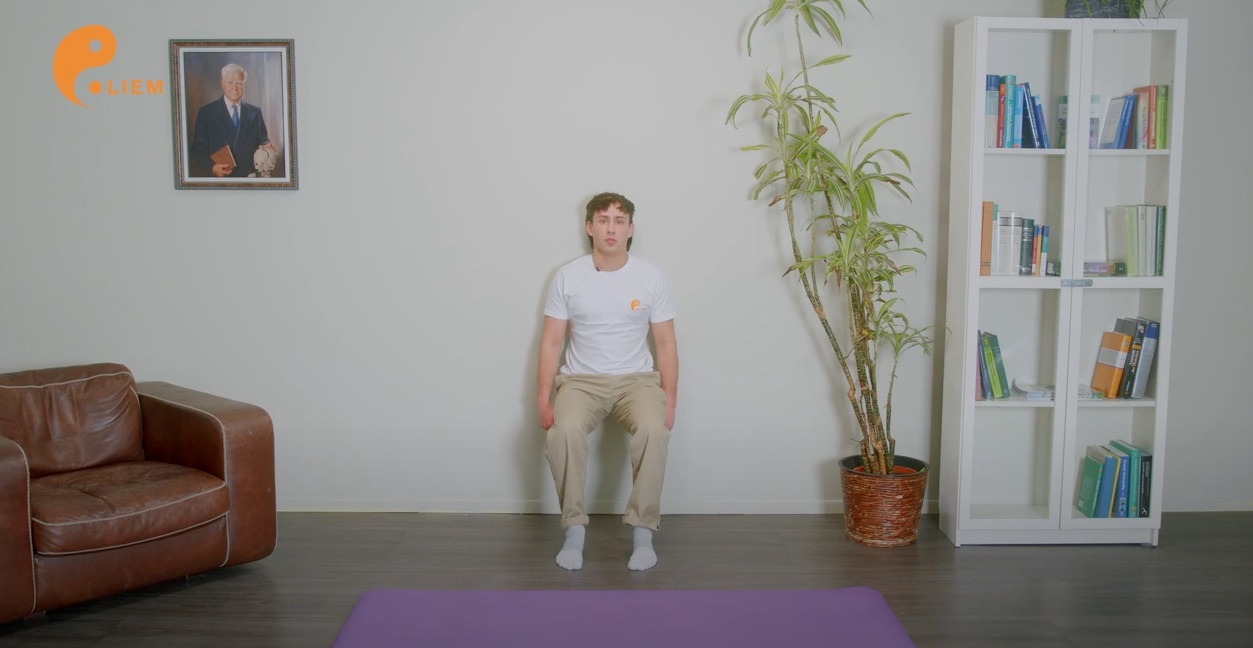When did you first encounter the concept of potency?
In my osteopathic education around 1989 and e.g. when I worked with Alan Becker in his office or with Rob Fullford during his workshop and with Ann Wales.
2. would you be able to provide me with a definition of potency?
Potency is a metaphysical vitalist concept in the field of cranial osteopathy. A historical definition could be: "potency" described as that which sets things in motion or a kind intelligent, moving force, or a kind of organizing factor in the living organism, a kind of active targeted intelligent force in the organism. According to this concept, the osteopath would be a kind of supporter, so that this "potency" can do its work in the sense of a healing process. For Becker, "potency" is also similar to potential energy in the centre of a hurricane.According to Sutherland, "potency" in the cerebrospinal fluid is also a fundamental principle in the functioning of the Primary respiratory mechanism with an intelligence of its own. So it could be used in his concept for diagnosis and treatment in the fluctuation of the cerebrospinal fluid. These ideas can be traced back to Swedenborg. Actually I think, there are many slightly different views on potency: for example "potency" of the "breath of life" enters the midline from outside, etc.
3. in your opinion how important is potency in your practice?
The concept of potency has changed for me over the time. At the beginning, I followed this concept nearly like a religious adept. Over the time, I questioned the religious and absolutist statements of this doctrine, which often moved outside of any scientific discourse and mostly showed itself rather as a discourse of power in teaching courses. For me, especially during the treatment process, it means that I focus on the healing potential and resources of any kind in the patient.
4. can you please describe your perception of potency during your treatment process? How do you palpate/experience potency?
I use the concept, for example, in such a way that during the palpatory approach I am open to and aligne my awareness with the homeostatic forces in the patient, e.g. internal tissue dynamics, breathing, pulse, and other rhythmic activities and give them space in the tissue to express themselves and I follow their dynamics in the tissue with my palpation. By resonating with the forces contained in the fulcrum through palpation, the bound "potency" can, so to speak, be released and be accessible again and flow into the affected structures, expressing itself.
But it also means much more to me, namely to get in contact to all resources in the patient for the healing process, which means, for example, that the patient again participates proactively in the healing process. In this sense I would also like to awaken his understanding for his involvement in the healing process and motivate him to appreciate what is going well in his life. A kind of salutogenetic approach.
5 How would you teach students to perceive potency both theoretically and practically?
Theoretically, students should read Sutherland and Becker and exchange what it means for them as well as reflect critically on it, from a hermeneutical, historical, phenomenological, structuralist, system-theoretical and interobjective point of view.
Secondly, I would support palpation exercises to experience what I described already for my own.
Further on, I would not limit their palpation to this concept and give them space to follow sincerely their palpation and train interrater reliability between each other
Subsequently I support students to be aware of many different palpation skills, including as many different forms of palpation and competencies.
6 From your perspective. Using a scale 1-5, 1 being least important, how important does the profession consider the concept of potency and why?
The profession is a very vague description. For the cranial protagonists it has a big importance perhaps 4. In the rest less, perhaps 1. Specifically in the scientific dialogue it has less importance. The reason for this seems to me, that the community, which relies on this concept often acts outside the scientific community and shows less openness for a critical discourse as well as missuses scientific work just to prove their own prejudices.
7. is it possible to work as an osteopath without understanding the concept of potency?
Of course, if not, I would deny many osteopaths, who do not follow the concept of potency, that they can support healing processes in the patient and ignore all the studies that prove that they do. I think it is not so much concepts of faith or personal meanings that count here, but clinical investigations and results. After all, the patient does not come to the osteopath to be converted.
Do you have any questions concerning potency that you would like answered for yourself? And, were there topics you would have liked to discuss that weren't covered?
What I am missing is the scientific discourse on this topic, for example on the advantages and disadvantages of a metaphysical language in the osteopathic concept, as well as the critical reflection of the concept "potency", for example from a hermeneutical, historical, phenomenological, structuralistic, systems-theoretical and interobjective, biopsychosocial point of view, and chaos theory, complexity theory, empirical views, e.g. possibilities of objective measurement methods in the discussion.
It would be interesting to examine in more detail the effects and limitations of the "potency" concept. Also the question to what extent osteopathic concepts on potency reflect current scientific discourses on healing processes in the patient as well as how we can design studies on the effectiveness of treatment in relation to the concept of potency or to examine interrater reliabilities in relation to the palpation of potency. If there wouldn't be any interrater reliabilities, what would be the conclusion and significance of a "potency" finding and for a teaching process?
What I miss are more deeper reflections on the topic, e.g. if patients tend to hand over their bodies to the osteopath to be treated and if osteopaths accept their role and play the game of a metaphysical healer being able to be in contact to something like the potency or other energetic or invisible forces, could there be a certain danger, to miss the most important point for healing, that is that the patient get proactive for their health and life? This could perhaps happen if inner experiences or persons are reduced to energetic or physical or quantum physical aspects, without acknowledging arousal, emotions and cognitions as well as lifehabits in the treatment process. If an osteopathic treatment is more related to the concept of "potency", I experienced that sometimes this make it more difficult for patients to assume responsibility for their state of physical and psychological health, as it is more focused on the magic of the abilities of the hands to synchronize to metaphysical aspects like potency, quantum physics, cosmic rhythms or ominous embryological movements instead of just simple meaningful understanding of lifehabits and awareness in the disease process and the understanding of the meaningfulness in the symptoms.
Interview with Torsten Liem on the concept of "potency" in osteopathy
Candice Nesrallah interviews Torsten Liem
In: Osteopathic Medicine. 22nd year, issue 1/2021, pp. 2-3,
German version
When did you first come into contact with the concept of "Potency"?
In my osteopathic training around 1989 and for example when I worked with Alan Becker in his practice in Hawaii, with Rob Fullford during his workshop and with Ann Wales in her home near Boston.
2. would you be able to give me a definition of "Potency"?
"Potency" is a metaphysical vitalistic concept in the field of cranial osteopathy. A historical definition could be: ""Potency"" described as that which sets things in motion, or a kind of intelligent moving force, or a kind of organising factor in the living organism, a kind of active purposeful intelligent force in the organism. According to this concept, the osteopath would be a kind of supporter so that this ""Potency"" can do its work in terms of a healing process. For Becker, "Potency" is also similar to the potential energy in the centre of a hurricane. According to Sutherland, ""Potency"" in the cerebrospinal fluid is also a fundamental principle in the functioning of the primary respiratory mechanism with its own intelligence. Thus, it could be used in his concept for diagnosis and treatment in CSF fluctuation. These ideas can be traced back to Swedenborg. I don't think there exists a completely unified but many slightly different views of "potency": for example, the ""potency"" of the "breath of life" entering the midline from the outside and many other
3. how important do you think the concept of "potency" is in your practice?
The concept of "potency" has changed for me over time. In the beginning, I followed this concept almost like a religious adept. Over time, I questioned the religious and absolutist statements of this doctrine, which often moved outside of any scientific discourse and mostly showed itself more as a discourse of power in lectures. For me, for example, it means that I focus on the healing potential and resources of every kind in the patient, especially during the treatment process.
4. can you please describe your perception of "Potency" during your treatment process? How do you palpate/experience the "Potency"?
I use the concept, for example, in such a way that during the palpatory approach I am open and align my awareness with the homeostatic forces in the patient, e.g. the inner tissue dynamics, breathing, pulse and other rhythmic activities, and give them space in the tissue to express themselves, and I follow their dynamics in the tissue with my palpation. By resonating with the forces contained in the fulcrum through palpation, the bound ""potency"" can be released, so to speak, and made accessible again to flow into the affected structures and express itself.
But it means much more to me, namely to get in touch with all the resources in the patient for the healing process, which means, for example, that the patient proactively participates in the healing process again. In this sense, I also want to awaken his understanding for his participation in the healing process and motivate him to value what is going well in his life. A kind of salutogenetic approach.
5. how would you teach students to perceive "Potency" both theoretically and practically?
Theoretically, students should read Sutherland and Becker and share what it means to them. I also encourage students to critically reflect on the concept from hermeneutic, historical, phenomenological, structuralist, systems theory and interobjective perspectives.
Secondly, I would use palpation exercises to experience for myself what I have already described.
Furthermore, students' palpation is not to be limited to this concept, but to give them space to sincerely follow their palpation experience from different perspectives and to exchange reliabilities with each other by means of intermediate testers.
Afterwards support I students to become aware of many different palpation skills, including as much as possible different forms of palpation and palpation skills.
6. from your perspective. On a scale of 1-5, with 1 being least important, how important does the osteopathic profession consider the concept of "potency" and why?
The profession is a very vague description. For the cranial protagonists it may have a great importance, I would guess a 4. For the rest of osteopaths less, maybe 1. Especially in the scientific discourse it has less importance. The reason for this seems to me to be that the community that relies on this concept, often acts outside of scientific discourse and shows less openness to critical discourse at all, as well as not infrequently abusing scientific work just to prove their own prejudices.
7. is it possible to work as an osteopath without understanding the concept of "potency"?
If not, I would deny many osteopaths who do not follow the concept of "potency" that they can support healing processes in the patient and ignore all studies that prove this. I think what counts here is not so much concepts of faith or personal opinions, but clinical studies and results. After all, the patient does not come to the osteopath to be converted.
8. do you have any questions about "Potency" that you would like answered for yourself?
What is often missing for me is the scientific discourse on this topic, e.g. on the advantages and disadvantages of a metaphysical language in the osteopathic concept, as well as the critical reflection of the term ""Potency"", e.g. from a hermeneutic, historical, phenomenological, structuralist, system-theoretical and interobjective, biopsychosocial point of view, as well as chaos theory, complexity theory, empirical considerations, e.g. possibilities of objective measurement methods in the discussion.
It would also be interesting to explore further the implications and limitations of the concept of ""Potency"". Also, how far osteopathic concepts of ""Potency"" reflect the current scientific discourse on healing processes in the patient and how we can design studies on the effectiveness of treatment in relation to the ""Potency"" concept or to investigate interrater reliabilities in relation to the palpation of ""Potency"". If there were no interrater reliabilities, what would be the conclusion and significance for a "potency" finding and for teaching?
What I also often miss are deeper reflections on the topic, e.g. When patients tend to hand over their body to the osteopath for treatment., and when osteopaths take on this role and play the game of a metaphysical healer who is able to be in contact with something like the "Potency" or other energetic or invisible forces. Could then there may be some danger, to miss the most important aspect for healing, namely that the patient becomes active for his health and his life?
A certain danger could perhaps exist if inner experiences or persons on energetic or physical or quantum-physical Aspects be reducedwithout considering subjective aspects such as neurovegetative arousal, emotions and cognitions of the patient in the treatment process. If a osteopathic treatment has more to do with the concept of ""Potency"", I have found that this sometimes makes it more difficult for patients to take responsibility for their physical and mental state of health, as they rely more on the magic of the skills of the osteopath's hands, which deal with metaphysical aspects such as ""Potency"", quantum physics, cosmic rhythms or ominous embryological movements synchroniseInstead of patients being supported to develop a meaningful understanding of lifestyle habits and awareness in the disease and recovery process and the understanding of the meaningfulness of symptoms.
Torsten Liem on the concept of "potency" in osteopathy
Candice Nesrallah interviews Torsten Liem
In: Osteopathic Medicine. 22nd year, issue 1/2021, pp. 2-3,




